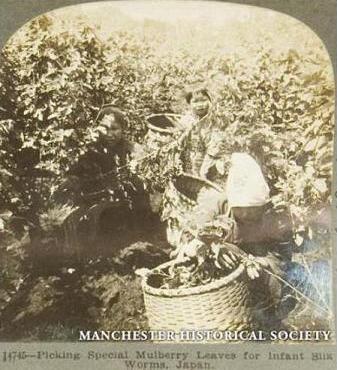



The newly hatched silkworms are very small and delicate, scarcely an eighth of an inch long. At this time they are fed upon the tender young leaves of the mulberry. At first the worms do not even eat these small leaves, being able only to pierce them and suck the sap. Soon they grow stronger and eat the tender portions of the leaves between the veins.
There are many sub-species of the white mulberry, and some of them, as Rein observes, bear black fruit. But even when it has black berries, Morus alba is distinguished from the black mulberry, Morus niger, by its leaves, which are a lighter green, thinner, and of finer texture. In Japan the three cultivated varieties of the white mulberry are distinguished as the shrubby, the limited tree-shaped, and the free tree-shaped. The shrubby variety, which is seen in this view, is very carefully cultivated; it predominates in the great silk districts of Japan. The shoots are seat about two feet apart, in rows a yard apart. They are cut down nearly to the ground every year; fresh shoots spring forth from the stump. The leaves are stripped from the branches on the shrub or the switches are taken home and stripped. For one method of carrying mulberry branches see view

 )
)